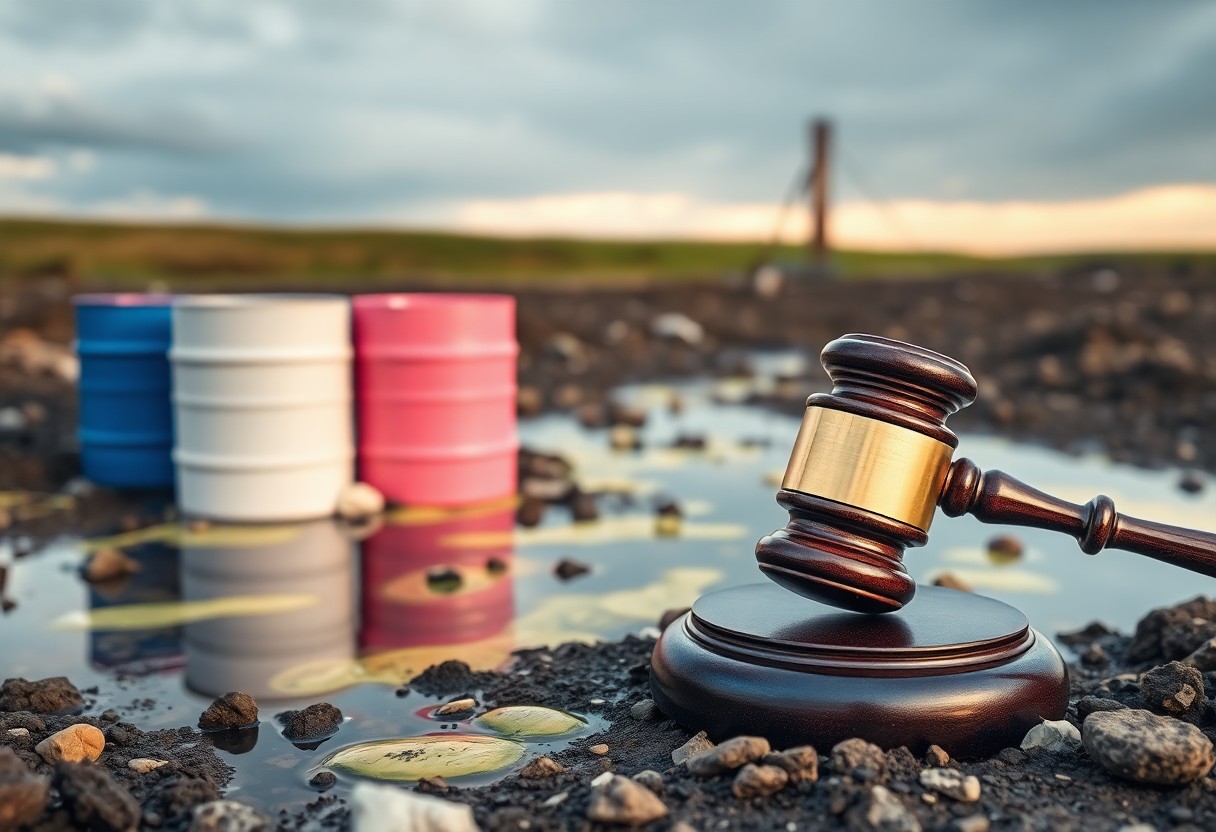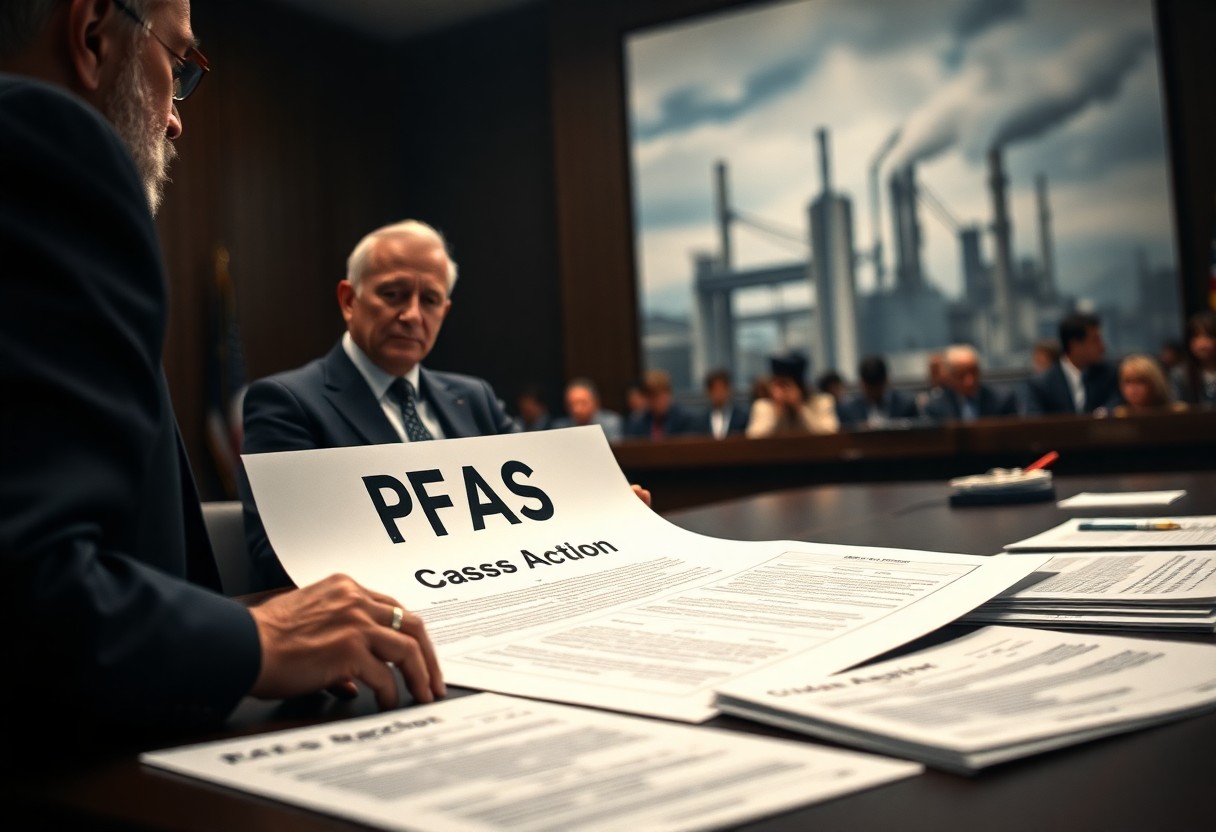Lawsuit deadlines can be complex, especially when it comes to PFAS contamination. If you’ve been affected by the harmful effects of per- and polyfluoroalkyl substances (PFAS), it’s vital to understand how much time you have to act. State laws vary regarding the statute of limitations for these cases, and missing the deadline can prevent you from seeking the compensation you deserve. This guide will provide key insights into your legal timeframe, ensuring you remain informed and prepared to take action.
Key Takeaways:
- Statute of Limitations: Each state has its own statute of limitations that dictates how long you can wait to file a PFAS contamination lawsuit, typically ranging from one to several years.
- Discovery Rule: The discovery rule may apply, allowing individuals to file a lawsuit once they become aware of the contamination and its effects, even if it occurs years after the initial pollution.
- Consult Legal Advice: It’s important to consult legal expertise to ensure you understand the specific deadlines and procedures associated with PFAS lawsuits in your jurisdiction.
Understanding PFAS Contamination
While the world becomes increasingly aware of the environmental and health risks associated with persistent contaminants, it is crucial to understand what PFAS are and how they can affect your community and health. PFAS, or per- and polyfluoroalkyl substances, are a group of man-made chemicals that resist heat, water, and oil, leading to their widespread use in various products and industrial processes. This creates long-lasting contamination in soil and water sources, posing significant health risks.
What are PFAS?
An important subset of chemicals, PFAS, includes thousands of compounds known for their resistance to degradation. Due to their hydrophobic and lipophobic properties, they are used in products such as non-stick cookware, water-repellent fabrics, and food packaging. Their stability in the environment raises serious concerns about potential health risks associated with long-term exposure.
Common Sources of PFAS Contamination
An array of common sources contributes to PFAS contamination, impacting the environment and public health. These sources include industrial discharges, military firefighting training sites, wastewater treatment plants, and even everyday consumer products. It is critical for you to recognize these sources to better understand potential exposure risks.
Further, PFAS can leach into drinking water from firefighting foam used at airports and military bases, creating a significant risk for nearby communities. They are also found in certain cosmetics and stain-resistant textile treatments, which you might use daily without knowing the potential risks. Identifying these sources empowers you to take precautionary measures against PFAS exposure and protect your health and that of your loved ones.
Legal Framework for PFAS Lawsuits
Some of the key aspects of the legal framework governing PFAS lawsuits include federal statutes, state regulations, and common law principles. Comprehending these elements is crucial for evaluating your potential claims and understanding the legal landscape surrounding PFAS contamination.
Relevant Laws and Regulations
The most pertinent laws include the Comprehensive Environmental Response, Compensation, and Liability Act (CERCLA) and the Resource Conservation and Recovery Act (RCRA), which regulate hazardous waste management and remediation efforts. Additionally, various state laws may apply, further affecting your ability to file a lawsuit.
Types of Claims You Can File
Below are some common claims you may consider if you have been affected by PFAS contamination:
| Personal Injury | Claims related to health issues caused by PFAS exposure. |
| Property Damage | Claims concerning damage to your property from contamination. |
| Medical Monitoring | Claims for ongoing health assessments due to potential exposure. |
| Class Action | Collective claims from multiple affected individuals. |
| Strict Liability | Claims based on the harmful nature of PFAS regardless of intent. |
Thou may pursue various types of claims against parties responsible for PFAS contamination, deepening your understanding of your rights can empower your case significantly.
Additional Information on Types of Claims You Can File
Hence, being informed about potential claims can strengthen your position as you navigate the complexities of PFAS lawsuits:
| Negligence | Claims asserting lack of care leading to contamination. |
| Violation of Statutes | Claims based on breaches of environmental laws. |
| Emotional Distress | Claims for psychological impacts from exposure. |
| Future Medical Expenses | Claims for anticipated future healthcare costs. |
| Punitive Damages | Additional damages rewarding plaintiffs for extreme behavior. |
Thou can significantly benefit from understanding the various types of claims available to you, as it can effectively enhance your litigation strategy and maximize potential recovery.
Statutes of Limitations
For anyone affected by PFAS contamination, understanding the statutes of limitations is imperative to ensure you don’t lose your right to seek justice. Each state has specific timeframes in which you must file a lawsuit, and navigating these laws can be complex. Missing these deadlines may prevent you from holding responsible parties accountable for the damages caused by PFAS exposure.
What is a Statute of Limitations?
Limitations refer to the legal time limits imposed on individuals to file a lawsuit after an injury or harm has occurred. These statutes vary by jurisdiction and type of claim, establishing a definitive period within which you must initiate legal action. Understanding this timeline is vital in protecting your rights and pursuing compensation.
Timeframes for Filing PFAS Lawsuits
Statutes for filing PFAS lawsuits typically range from one to several years, depending on the specifics of your case and the state laws involved. It’s imperative to be aware of your local regulations and seek legal advice promptly to avoid missing out on compensation for your health issues and damages caused by PFAS exposure.
At the onset of your awareness of PFAS contamination, it is imperative to note that timeframes for filing lawsuits can differ significantly by state. Some jurisdictions may provide as little as one year from the date you discovered the harm, while others may extend the limit to several years. In certain cases, factors like discovery of harm or ongoing exposure may affect the time you have to file. Consulting with an attorney experienced in PFAS litigation as soon as possible will ensure you understand your rights and stay within the required timeframes, maximizing your potential for compensation.
Factors Affecting Filing Deadlines
After determining if you’re eligible to file a lawsuit, several factors can influence the filing deadlines for your PFAS contaminations lawsuit. Key considerations include:
- Your state’s specific statute of limitations
- The date you suffered from exposure or harm
- Any delays in discovering your injury
Thou must take these factors into account to avoid missing the opportunity to file your claim.
Discovery Rule
Discovery rules can affect when the filing period begins. This legal principle allows the countdown for your lawsuit to start when you first discover, or should have discovered, your injury. If you were unaware of how PFAS contamination impacted your health until recently, the timeline for filing might extend beyond the date of exposure.
State-Specific Variations
One significant aspect that can influence your claim is the state-specific variations in filing deadlines. Each state has its own rules governing the time limits for personal injury cases, including those related to PFAS contamination.
Considering that some states may provide more lenient deadlines while others could be stricter, staying informed is necessary. Your filing deadline can vary greatly depending on factors such as state laws and the nature of your harm. Staying up-to-date with your state’s regulations is critical to effectively protecting your rights and pursuing compensation.
Gathering Evidence for Your Case
Once again, assembling a strong case for PFAS contamination requires diligent evidence gathering. Begin by collecting all relevant documentation that can support your claims. This initial step is pivotal for establishing a clear link between the contamination and its effects on your health and environment.
Importance of Documentation
Your case’s success hinges on thorough documentation. Accurate records allow you to track exposure levels and demonstrate the harmful impact of PFAS on your life. Reliable evidence serves as a foundation upon which your legal arguments are built, ensuring that your voice is heard.
Types of Evidence Needed
Your evidence should encompass a variety of materials to create a comprehensive case:
- Medical records indicating health issues related to PFAS exposure
- Water testing results showing contamination levels
- Environmental reports assessing the impact of PFAS
- Expert testimonies from professionals in the field
- Personal journals chronicling symptoms and experiences
This breadth of evidence will present a thorough narrative supporting your claims.
| Type of Evidence | Importance |
|---|---|
| Medical Records | Proves health impacts |
| Water Testing Results | Demonstrates contamination levels |
| Environmental Reports | Assess environmental impact |
| Expert Testimonies | Adds credibility and support |
| Personal Journals | Documents personal experiences |
Understanding the types of evidence needed not only aids in gathering sufficient data but helps frame your argument effectively. You should focus on collecting documentation and proof that establishes how PFAS has negatively impacted your life. By doing so, you reinforce your case against those responsible for the contamination.
- Medical records from healthcare providers
- Testing reports showing PFAS presence
- Environmental impact assessments conducted by agencies
- Witness statements supporting your claims
- Your own documentation of experiences and symptoms
This thorough approach will significantly enhance the integrity of your case.
Why You Should Act Quickly
All individuals affected by PFAS contamination should prioritize their legal options. Taking swift action not only maximizes your chances of obtaining fair compensation but also helps to hold responsible parties accountable for their negligence. Delays in filing a lawsuit can jeopardize your case and may limit your rights to recover damages.
Impact of Delayed Action
Impact from waiting to file your PFAS lawsuit can be significant. Evidence may become less reliable over time, witnesses might forget crucial details, and legal deadlines could elapse. Inaction can seriously undermine your case, making it harder to prove your claims and secure the compensation you deserve.
Benefits of Prompt Legal Consultation
Impact of seeking legal advice quickly includes enhancing the strength of your case. Engaging a qualified attorney can provide you with a valuable understanding of your rights, and help you gather evidence and documentation early on. This proactive approach can significantly influence the outcome of your lawsuit.
A rapid consultation with a legal professional allows you to identify all potential claims related to PFAS exposure. Additionally, your attorney can help you navigate complex regulations and deadlines, empowering you with timely actions. By acting fast, you can preserve important evidence and ensure that your case is as robust as possible. Ultimately, prompt legal consultation is vital for protecting your interests and fortifying your position against any defenses.
To wrap up
Presently, understanding the timelines for filing a PFAS contamination lawsuit is vital for protecting your rights. You typically have a limited window to take action, often dictated by state law and when you became aware of the contamination’s impact on your health or property. It’s important to stay informed about these deadlines to ensure you don’t miss your opportunity for legal recourse. Consulting with an attorney experienced in environmental law can provide you with the guidance you need to navigate this process effectively.


















